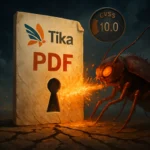Cybersecurity researchers at AquaSec have uncovered a sophisticated new Linux malware strain that represents a significant evolution in threat development. Named Koske, this malware demonstrates clear indicators of artificial intelligence involvement in its creation and employs an innovative delivery mechanism using JPEG images of pandas to conceal malicious payloads.
Advanced Threat Architecture and Initial Compromise Vector
Koske operates as a highly sophisticated adaptive threat specifically engineered to deploy optimized cryptocurrency miners targeting both CPU and GPU resources. Security analysts have identified behavioral patterns within the malware’s code structure that strongly suggest the utilization of large language models (LLMs) or automated development frameworks during its creation process.
The initial system compromise occurs through exploitation of misconfigured JupyterLab instances, enabling attackers to execute arbitrary commands within the target environment. Following successful infiltration, threat actors download two specially crafted JPEG images featuring panda photographs, hosted on legitimate image hosting services including OVH images, freeimage, and postimage platforms.
Polyglot File Technology: Beyond Traditional Steganography
The most notable innovation in Koske’s architecture is its abandonment of conventional steganographic techniques in favor of polyglot file technology. These specialized files can be interpreted by different applications as entirely different data formats, allowing a single file to function simultaneously as a legitimate JPEG image and an executable script.
Each panda image contains valid JPEG headers ensuring proper image rendering while embedding shell scripts and C programming language code within the file structure. When viewed by users, the files display harmless panda photographs, while script interpreters execute the malicious code appended to the file’s end.
Dual-Payload Execution Framework
Koske’s architecture supports parallel execution of two distinct payload types from each image file. The primary payload consists of C language code that writes directly to system memory, compiles, and executes as a shared object (.so) file, functioning as a sophisticated rootkit component.
The secondary component operates as a shell script executing from memory, utilizing standard Linux system utilities to maintain stealth and minimize digital forensic traces. This script implements multiple functions for ensuring persistent connectivity and circumventing network-based security controls.
Adaptive Network Configuration and Proxy Management
The malware demonstrates exceptional automation capabilities by automatically rewriting the /etc/resolv.conf configuration file to utilize Cloudflare and Google DNS servers, protecting these changes with the chattr +i attribute to prevent modification. Additionally, Koske resets iptables rules and clears system proxy variables to ensure unimpeded network communication.
A particularly sophisticated feature includes a specialized module for brute-forcing functional proxy servers, enabling the malware to maintain connectivity even in highly restricted network environments. This adaptive approach significantly enhances the threat’s persistence and operational resilience.
Comprehensive Cryptocurrency Mining Operations
Before deployment, Koske conducts detailed hardware capability assessment of the compromised host, analyzing CPU and GPU specifications to select optimal mining configurations. The system supports mining operations for 18 different cryptocurrencies, including Monero, Ravencoin, Zano, Nexa, and Tari.
When specific currencies or mining pools become unavailable, the malware automatically switches to backup alternatives from its embedded configuration list, demonstrating remarkable flexibility and operational continuity. This automated failover mechanism ensures consistent revenue generation for threat actors regardless of market conditions or infrastructure disruptions.
Attribution Challenges and Geographic Indicators
Security researchers have identified several potential attribution indicators within Koske’s codebase, including Serbian IP addresses and language phrases, along with Slovak language usage in associated GitHub repositories containing mining tools. However, definitive attribution remains inconclusive due to the sophisticated nature of the threat and potential false flag indicators.
The emergence of Koske represents a significant milestone in Linux threat evolution, showcasing the potential for AI-assisted malware development to create increasingly sophisticated attack tools. Organizations must strengthen JupyterLab configuration monitoring, implement comprehensive suspicious file analysis solutions, and maintain regular security system updates to defend against these adaptive threats. The integration of artificial intelligence in malware development signals a new era requiring enhanced detection capabilities and proactive security measures across enterprise environments.






